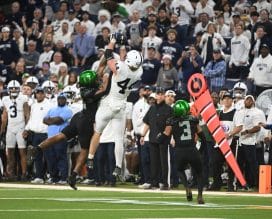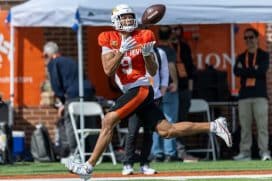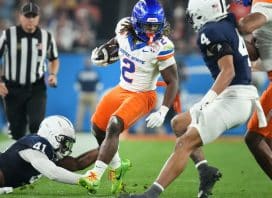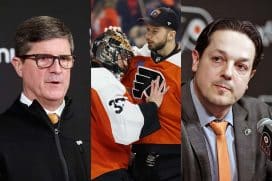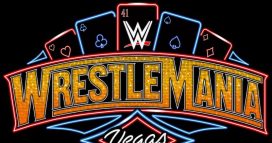Writer: Matt Albertson
Race and Baseball in Philadelphia, Part 2: Integration of the Philadelphia Athletics and Phillies
In Race and Baseball in Philadelphia, Part 1, I reviewed the importance of Octavius Catto and the Philadelphia Pythian Base Ball Club in the grand scheme of race in baseball history. Catto and the Pythian Club pressed for racial integration in baseball during the 19th century as a way to press for racial equality in society.
African-Americans played professionally at various levels into the waning years of the 19th century until a firm color barrier was established. This barrier spawned the creation of negro leagues in the United States. Major black baseball flourished in Philadelphia for the first half of the 20th century, with powerhouse clubs like the Philadelphia Giants (1902-1911), the Hilldale Athletic Club (also known as the Darby Dasies, 1916-1932), and the Philadelphia Stars (1933-1952). These clubs both shared stadiums with white teams and leased their own, and played white teams in exhibitions. But the popularity and sustainability of negro league baseball began to wane once Jackie Robinson broke the Major League Baseball color barrier in 1947. By 1960, the last vestiges of formal negro league baseball – the Negro American League – vanished from the baseball landscape.
Integration of Philadelphia major league teams did not come easily. The Athletics were the first Philadelphia franchise and eighth major league franchise to integrate when Bob Trice took the mound as the Athletics' starting pitcher on September 13, 1953 against the St. Louis Browns. Trice was born in 1926 in Newton, Georgia. He was a three sport athlete — competing in football, basketball, and baseball — but focused on baseball when he earned a roster spot with the Homestead Grays. Trice began his career as an infielder-outfielder but eventually transitioned to pitcher when he joined integrated professional baseball in 1951 with the Farnham club in Canada's Provincial League. In 1953 he was signed by the Philadelphia A's and joined the International League's Ottawa club where he earned Triple-A International League Rookie of the Year with a 21-10 record and a 3.10 ERA. This performance earned him a September call up.
Trice's son Bob explained in the Marin Independent Journal in 1997 that Trice was largely ignored by his teammates when he arrived in the clubhouse. Trice took the field at Shibe Park for the first time on September 13, 1953 and walked out to center field so he could get a good view of the field. Then Bobby Shantz – the 1952 American League MVP – trotted out to center field and introduced himself to Trice and said that he was glad Trice was on the team. "'I just went out and just talked to him a little,' said Shantz…'These other guys were trying to act indifferent. I didn't want it to bother him, and I don't think it did bother him.'"
Trice didn't fare well in his major league debut, giving up eight hits and five runs in eight innings as Philadelphia lost 5-2. (The opposing pitcher was Don Larson, who pitched the only Perfect Game in World Series history for the Yankees in 1956). He earned his first victory on September 20, 1953 against the Washington Senators when he gave up 10 hits and seven runs in six innings. Trice's major league career lasted 26 games over the period of three seasons from 1953-1955 (he accompanied the A's when they moved to Kansas City in 1955). For his career, he was 9-9 with a 5.80 ERA in 26 games. His career was cut short when he became disgruntled with management, which led him to request a demotion to Triple-A. "He just felt that playing in the minor leagues was more fun, and the salary wasn't appreciably less." Trice eventually finished his professional career with the Mexico City Reds in 1958. Trice told his son Bob that reaching the major leagues "'was like an adrenaline rush, a surge, a moment of making it to the top of the mountain.'"
—
History is like a shattered windshield – it's difficult to put all the pieces into place to create the original whole again. That's not to say that historians "make stuff up". Far from it, historians use as much information at their disposal to provide as clear a picture of their topic as possible, which allows the reader to form their opinion of the topic. With that in mind, take the following story of Bill Veeck purchasing the Philadelphia Phillies with a grain of salt. There are arguments made by baseball historians for both sides of the story.
—
The Philadelphia Phillies' path to integration is less concrete than the their American League brethren. In his 1961 autobiography, Bill Veeck – former owner of the Cleveland Indians, St. Louis Browns, and Chicago White Sox (he repurchased the club in 1975) – explained how he tried to buy the Philadelphia Phillies from team president Gerry Nugent in 1943. Veeck stated his idea was to get rid of all the players on the current roster and replace them with black players who had the talent to take the Phillies from cellar dwellers to pennant winners in the blink of an eye. He claimed this plan was stalled by then National League President Ford C. Frick (the two had a very contentions relationship), so his plan never came to fruition.
According to historian Christopher Threston, Philadelphia native Roy Campanella requested to tryout for the Phillies in 1942. At the time, Campanella was a catcher for the negro league Baltimore Elites. On an off day, he decided to attend a Phillies game and arrived to the stadium an hour early. He spoke with Phillies' manager Hans Lobert about playing for the Phillies. Lobert was interested. He knew Campanella was a talented catcher who could help his beleaguered Phillies roster. Lobert suggested that Campanella speak with club president Gerry Nugent. Nugent told Campanella that he would have to start in the low minor leagues and a tryout was never held. Richie Ashburn noted that Campanella wanted to play for the Phillies, not the Dodgers. Nevertheless, the 1942 Phillies finished with a 42-109 record while Roy Campanella eventually completed a Hall of Fame career with the Brooklyn Dodgers.
The National League eventually sold the club to William Cox in 1943. Cox was banned from baseball later that year for gambling offenses and the franchise was then sold to Robert Carpenter Sr. in November 1943. Despite the new ownership changes, the Phillies fortunes stayed the same as they remained at or near the bottom of the standings through the mid-1940s. What did change was organized white baseball as a whole when Jackie Robinson made his debut with the Brooklyn Dodgers in 1947, becoming the first African-American to play in the major leagues since Moses Fleetwood Walker in 1884. It was not a popular change, and that sentiment can be encapsulated in one event: a late April meeting between the Phillies and Brooklyn Dodgers where Phillies manager Ben Chapman berated Dodger rookie Jackie Robinson with numerous racial slurs. The event is viewed today as one of the most embarrassing moments in franchise history, but at the time this type of treatment was not uncommon throughout baseball. Robinson promised general manager Branch Rickey he would not retaliate to such attacks, and made good on that promise even in instances like this. It took exactly 10 years after that event for the Philadelphia Phillies to integrate.
Baseball historians postulate that the Phillies failed to integrate sooner because the club won the National League Pennant in 1950 over the integrated Brooklyn Dodgers. Upper management didn't see integration as a necessity. Ashburn explained why he felt the "Whiz Kids" only won a single NL Penant: ''We didn't win after 1950, but I think there's a reason…We were the last team to get any black ball players. The Giants, the Dodgers, the Braves were getting the good black ball players. We were still pretty good, but they were just getting better.''
The Phillies were the third-last team to integrate when, in 1957, John Kennedy appeared as a pinch runner for Solly Hemus in the 8th inning against the Brooklyn Dodgers on April 22. Like Bob Trice, Kennedy's major league career was short-lived. Kennedy appeared in five total games, made two plate appearances but did not register any hits. He scored one run and struck out once, too. Both Trice and Kennedy paved the way for future non-white players to take the field for Philadelphia major league teams. In the third and final installment of Race and Baseball in Philadelphia, I'll discuss Philadelphia's first black major league baseball star, Dick Allen.
—
The images in this post are courtesy Getty Images and the Negro League Baseball Museum.
Information in this article was obtained from: the Marin Independent Journal (theyclearedthelane.com), baseball-reference, Baseball Research Journal and the SABR bioproject. William C. Kashatus, Jackie and Campy: The Untold Story of their Rocky Relationship and the Breaking of Baseball's Color Line, (Lincoln: University of Nebraska Press, 2014). Neil Lanctot, Negro League Baseball: The Rise and Ruin of a Black Institution, (Philadelphia: University of Pennsylvania Press, 2008). Christopher Threston, The Integration of Baseball in Philadelphia, (North Carolina: McFarland, 2003). Todd Zolecki, The Good, the Bad, & the Ugly: Philadelphia Phillies: heart-Pounding, Jaw-Dropping, and Gut-Wrenching Moments from Philadelphia Phillies History, (Chicago: Triumph Books, 2010).
Matt Alberston (@mdalbert88) is a historical columnist on Philliedelphia.com.
